- News
- Reviews
- Bikes
- Accessories
- Accessories - misc
- Computer mounts
- Bags
- Bar ends
- Bike bags & cases
- Bottle cages
- Bottles
- Cameras
- Car racks
- Child seats
- Computers
- Glasses
- GPS units
- Helmets
- Lights - front
- Lights - rear
- Lights - sets
- Locks
- Mirrors
- Mudguards
- Racks
- Pumps & CO2 inflators
- Puncture kits
- Reflectives
- Smart watches
- Stands and racks
- Trailers
- Clothing
- Components
- Bar tape & grips
- Bottom brackets
- Brake & gear cables
- Brake & STI levers
- Brake pads & spares
- Brakes
- Cassettes & freewheels
- Chains
- Chainsets & chainrings
- Derailleurs - front
- Derailleurs - rear
- Forks
- Gear levers & shifters
- Groupsets
- Handlebars & extensions
- Headsets
- Hubs
- Inner tubes
- Pedals
- Quick releases & skewers
- Saddles
- Seatposts
- Stems
- Wheels
- Tyres
- Health, fitness and nutrition
- Tools and workshop
- Miscellaneous
- Buyers Guides
- Features
- Forum
- Recommends
- Podcast
 2024 Giant Defy Advanced SL 0 - riding 1.jpg
2024 Giant Defy Advanced SL 0 - riding 1.jpg£11,499.00
VERDICT:
Light and superbly comfortable endurance bike in a super-high build, but look lower down the range for the best bargain
Excellent frameset
Comfortable
Light
High-end spec
Not many people will spend this amount
Tweaked geometry won't suit all
Weight:
7,240g
Contact:

This product has been selected to feature in road.cc recommends. That means it's not just scored well, but we think it stands out as special. Go to road.cc recommends
At road.cc every product is thoroughly tested for as long as it takes to get a proper insight into how well it works. Our reviewers are experienced cyclists that we trust to be objective. While we strive to ensure that opinions expressed are backed up by facts, reviews are by their nature an informed opinion, not a definitive verdict. We don't intentionally try to break anything (except locks) but we do try to look for weak points in any design. The overall score is not just an average of the other scores: it reflects both a product's function and value – with value determined by how a product compares with items of similar spec, quality, and price.
What the road.cc scores meanGood scores are more common than bad, because fortunately good products are more common than bad.
- Exceptional
- Excellent
- Very Good
- Good
- Quite good
- Average
- Not so good
- Poor
- Bad
- Appalling
The new Giant Defy Advanced SL 0 is an endurance road bike that manages to combine loads of comfort with a zippy feel and plenty of practicality. Although this flagship model costs a whole lot of money, there are plenty of options in the range that offer the same key features at much lower prices.
If you're interested in the Defy Advanced SL 0 but want to know what else is out there, check out our guide to the best endurance road bikes, at a variety of prices.
The Giant road range has been structured in the same way for years. You have the TCR bikes that are all about stiffness-to-weight, the Propel aero road bikes, and the endurance-focused Defys. Giant has just updated the Defy bikes with the aim of making them 'lighter, smoother and more efficient' than previously. Let's deal with the smoothness first...
Comfort
Some big brands have added special features to their endurance bikes intended to boost comfort. Trek, for example, equips the Domane with its IsoSpeed tech that's designed to smooth over lumps and bumps, while Specialized uses its Future Shock travel system on its Roubaix lineup.
Giant, on the other hand, has opted to keep things simple. There are no little gizmos added to the frame or fork here (although it doesn't name names, Giant says its own bike is 'free of cumbersome gimmickry'. Ouch!), but the Defy Advanced SL 0 still manages to be superbly comfortable.
The Cadex Classic tyres certainly help. Giant specs 32mm tyres across the range but we measured ours at 34.2mm on the Cadex 36 rims. They're set up tubeless so you can run them at low pressures without the worry of pinch-flatting an inner tube.
If you want to run larger, the new Defy has space for tyres up to 38mm wide. Big tyres might not be the most high-tech solution for smoothing the ride but here's the thing: they work. Giant's 'if it ain't broke, don't fix it' approach has a lot going for it.
Like most other road bikes these days, the Defy comes with dropped seatstays (the stays meet the seat tube lower than the top tube/seat tube junction) that are designed to increase compliance at the rear, and you get a surprising amount of downward flex from the updated D-Fuse seatpost. Well, surprising until you have a look at it, and then it's probably not surprising at all.
You'll see that the D-shaped composite post thins significantly up towards the top. Giant reckons that the design allows for up to 7mm of movement to absorb shocks, and that's no exaggeration. It's much more flexy than a standard post.
Up front, Giant has introduced a new version of its Contact SLR handlebar, with the top sections using similar D-shaped composite tubing. You can't feel the movement to the same extent that you can with the seatpost, but it's certainly a comfy bar that helps to absorb vibration on rougher roads.
For what it's worth, Giant claims that the new Contact SLR D-Fuse handlebar which comes on Defy Advanced SL and some Defy Advanced Pro models provides 40% more compliance than the previous generation, although that'll only mean something to you if you actually used the previous generation.
Those flattened top sections provide a really comfortable handhold when climbing, while the 8-degree flare means the drops provide a little more stability than a standard bar. Although it's a 44cm bar that's fitted to the large-sized bike I've been riding, the ends measure more like 47cm centre-to-centre.
The overall feel is that of a bike notably lacking in vibration. This is a smooth-riding machine that doesn't leave you feeling shaken about, even when the road surfaces are shot to bits.
Giant tweaks the geometry
One other factor that always has a big effect on comfort is the geometry, and Giant has been busy in this area, making its Defy bikes a little more aggressive than previously by lowering the front end. It says that this is in response to customer demand, with some riders having been put off previously by the tall head tube.
As I've been riding the large-sized Defy Advanced SL, let's use that as an example. It has a 575mm top tube, a 535mm seat tube, and a 195mm head tube. The stack height is 596mm and the reach is 392.9mm. This gives a stack/reach of 1.51 (it varies by frame size).
Previously, the large-sized Defy had the same length top tube and seat tube but the head tube was 10mm taller. The stack/reach was 1.55.
Is that enough to notice? Certainly. Let's not overdramatise it, though. For comparison, a large-sized Giant TCR has a head tube that's 10mm shorter again and a stack/reach of 1.45, making it more race-focused. Essentially, the new Defy splits the difference between the old Defy and the TCR in terms of the riding position. It still has an endurance geometry, it's just that you won't be sitting as upright as before unless you keep an extra spacer underneath the stem.
For me, it's a change that works... and it's my review, so there. I could get into a reasonably efficient riding position on the previous Defy, but it now feels just a bit more sporty – more performance minded without going into full-on chewing-the-handlebar mode.
Whether or not you're a fan is going to come down to your flexibility and taste. As with any other bike, you should definitely try before you buy to make sure the geometry suits.
Weight
The geometry and features such as the ability to take 38mm tyres are common to every bike in the range, but Giant offers the Defy at three different levels (check out the differences between them in our news story on the launch), the Advanced SL being the poshest.
This one has a claimed frame weight of just 785g (size medium) and a 345g fork. Our complete bike (large size, remember) hit the scales at 7.24kg including the bottle cages and computer mount (but without pedals). That's very light for an endurance bike – even an £11,500 one.
I wouldn't get mega-hung up on bike weight, especially on a bike like this where smoothness and comfort are paramount, but the Giant Defy Advanced SL does accelerate out of corners a lot like a TCR. It's rapid.
That lack of weight is apparent on the climbs, too. This bike is an absolute delight when the road heads upward, the 12-speed SRAM Red eTap AXS groupset equipping you with enough gears for the really steep stuff.
The chainset – which comes with a Quarq DZero power meter – is 46/33T and it's matched to a 10-36T cassette. The smallest 25-inch gear should get you up most hills that come your way without too much trouble, while at the top end, the 46x10 is 124 inches (just a bit larger than a 50x11 that you might get with a Shimano setup). At a cadence of 100rpm, you'll get up to about 37mph. If you want to go any faster than that, you'll need to spin your legs even faster or find some steeper hills.
Stiffness
The Defy Advanced SL is much stiffer than you might expect from an endurance bike. Get out of the saddle to sprint or climb and it feels impressively taut around the bottom bracket. It's not as rock-solid as the TCR, say, but it's not a million miles off.
The front-end stiffness is high too. The Defy Advanced SL and Defy Advanced Pro both use Giant's Overdrive Aero fork/headset/stem sizing with a 1 1/4in bearing at the top and 1 1/2in at the bottom. Cornering is precise, and the only movement you feel when throwing the bike around out of the saddle comes from the tyres.
If you're interested in stats, Giant says that the Defy Advanced SL 'provides up to 8.9% greater transmission stiffness than its top-of-the-line predecessor'. Bear in mind, though, that there was no Advanced SL version of the previous generation Defy, so Giant is comparing its new top-end model with the 2023 Defy Advanced Pro, which was considerably cheaper. The new Giant Defy Pro has a very similar level of overall stiffness to the old model, according to Giant's own figures.
Let's not get too distracted by the numbers, though. The bottom line is that in use, the Defy Advanced SL is sharp and reactive. It feels like a race bike when you put the power down, albeit one with a slightly higher front end than most.
The build
As mentioned previously [wafts hand vaguely upwards], the Defy comes in three flavours: the Advanced, with complete bike prices starting at £2,299, the Advanced Pro that's priced from £3,499, and this high-end Advanced SL.
The Advanced SL comes in two builds. You can go for a model built up with Shimano's second-tier Ultegra Di2 groupset for £8,499, or there's this SRAM Red eTap AXS version.
You'll know that Red is SRAM's top-end road groupset. Whether you prefer it to Shimano (or Campagnolo, or anything else) is largely a matter of taste but it hasn't put a foot wrong during our review period, providing quick, crisp shifts at both the front and rear. I won't go deeply into the performance of the Quarq Zero power meter here but it's of an equally high standard.
The Cadex 36 Disc wheelset certainly warrants a mention too (the 36 referring to the rim depth in millimetres). You get hookless carbon rims with a 22.4mm internal width (26mm outer width), aero carbon spokes and ceramic bearings.
The rear hub uses a ratchet drive system, and the complete wheelset weight is just 1,302g.
Light and tight, these really are excellent wheels, and the Cadex Classic tubeless tyres have provided sure and solid grip in a wide variety of conditions. They're quick and supple, and I'd be in no hurry whatsoever to change them. Quite the opposite.
The same goes for the Giant Fleet SLR saddle with its short nose, carbon rails, and large central cutout. We all know that saddles are always going to come down to individual preference but Giant's 'Particle Flow Technology' (where material can mould to your anatomy by moving between two pockets under the cover) works well for a lot of people. I certainly found it both supportive and comfy over rides of several hours.
Like the other options, the Defy Advanced SL comes with discreet mudguard mounts and a seatstay bridge that you can remove if you're not interested.
The money bit
You should have got the idea by now that the Defy Advanced SL 0 puts in a top-end performance – but priced at £11,499, it really should. As mentioned, the Defy Advanced SL 1, equipped with a Shimano Ultegra Di2 groupset, is £3,000 cheaper.
Still, most of us can't or don't want to spend that much. Personally, I'd be looking at either the Defy Advanced Pro or Defy Advanced for greater value. Those two platforms share a frame that weighs a claimed 860g, so just 75g more than the Defy Advanced SL's. The Defy Advanced Pro shares the Advanced SL's 345g fork while the Defy Advanced uses a fork that's slightly heavier (381g). Beyond that, the differences are down to spec choices. The Defy Advanced 1, built up with a Shimano 105 Di2 groupset, looks killer value at £3,199.
Okay, £11,500 is a whole lot of cash to drop on a new bike but it's only fair to compare the Defy Advanced SL 0 with similarly specced models from other brands. A Specialized S-Works Roubaix SL8 with a SRAM Red eTap AXS groupset (with power meter) is priced at £12,000, for example, while a Trek Domane SLR 9 AXS Gen 4 in a similar build is £12,975. I know it's a weird thing to say about a bike of this price, but it offers very good value against direct competitors.
Overall
Way up top I quoted Giant's claim that it has made the Defy 'lighter, smoother and more efficient' than previously. It also says that this bike is 'the perfect companion for an all-day sportive, an ambitious gran fondo, and epic solo days on challenging roads'. Fair play; all of this is absolutely the case.
Some endurance bikes kind of plod along. They get the job done, but they're a bit staid; just not especially fun. The Defy Advanced SL 0 is the opposite of all that. It's sparky and lively – one of those bikes where you just can't wait for the next ride – while also being exceptionally comfortable and practical for year-round riding. It's a lovely, lovely option for those who want a bike that responds like a race machine with a bit of extra comfort thrown in, although most people will want to look further down the range for the best value for money.
Verdict
Light and superbly comfortable endurance bike in a super-high build, but look lower down the range for the best bargain
If you're thinking of buying this product using a cashback deal why not use the road.cc Top Cashback page and get some top cashback while helping to support your favourite independent cycling website
road.cc test report
Make and model: Giant Defy Advanced SL 0
Size tested: Large
About the bike
List the components used to build up the bike.
Frame Advanced SL-grade composite, disc
Fork Advanced SL-grade composite, full-composite OverDrive Aero steerer, disc
Handlebar Giant Contact SLR D-Fuse S:40cm, M:42cm, M/L:42cm, L:44cm
Tape Stratus Lite 3.0
Stem Giant Contact SLR AeroLight S:90mm, M:100mm, M/L:100mm, L:110mm
Seatpost Giant SLR D-Fuse, composite, -5/+15mm offset
Saddle Giant Fleet SLR
Shifters SRAM RED eTap AXS
Front Derailleur SRAM RED eTap AXS
Rear Derailleur SRAM RED eTap AXS
Brakes SRAM RED eTap AXS hydraulic, SRAM CenterLine XR rotors [F]160mm, [R]160mm
Brake Levers SRAM RED eTap AXS hydraulic
Cassette SRAM Force, 12-speed, 10x36
Chain SRAM RED D1
Chainset SRAM RED D1 DUB, 33/46 with Quarq DZero power meter S:170mm, M:172.5mm, M/L:172.5mm, L:175mm
Bottom Bracket SRAM DUB, press fit
Rims CADEX 36 Disc WheelSystem, [F]36mm, [R]36mm
Hubs [F] CADEX R1 Hub, CenterLock, 12mm thru-axle [R] CADEX R1-C30 Low Friction Hub, 40t ratchet driver, CenterLock, 12mm thru-axle
Spokes CADEX Aero Carbon Spoke
Tyres CADEX Classic, tubeless, 700x32c (33.5mm), folding
Extras Computer mount, fender mount, water bottle cages, factory tubeless set up, 38mm max tyre size
Tell us what the bike is for and who it's aimed at. What do the manufacturers say about it? How does that compare to your own feelings about the bike?
Giant says, 'This fifth-generation Defy range takes everything riders love about it – namely its unbeatable blend of lightweight efficiency and smooth compliance – and levels up. It's now lighter, smoother and more efficient. It's the perfect companion for an all-day sportive, an ambitious gran fondo, and epic solo days on challenging roads.'
That sums it up pretty well. It's a comfortable bike for getting in the big miles, and it's also very quick and full of life.
Where does this model sit in the range? Tell us briefly about the cheaper options and the more expensive options
The Defy Advanced SL is the top model in the range.
Giant offers the Defy in three different platforms. The Defy Advanced SL is the lightest version, made from what Giant calls its Advanced SL composite and coming with a claimed frame weight of 785g (size medium).
The Defy Advanced Pro and Defy Advanced share a frame that's made with Giant's Advanced Composite and weighs a claimed 860g.
The Defy Advanced Pro and the Defy Advanced SL use the same 345g fork, while the Defy Advanced has a slightly heavier (381g) model.
The Defy Advanced SL and Defy Advanced Pro both use Giant's Overdrive Aero fork standard with a 1 1/4 in to 1 1/2in steerer. The Defy Advanced uses a 1 1/8in to 1 1/4in tapered steerer.
Beyond the frameset, the Defy Advanced SL uses Giant's top-level D-Fuse SLR seatpost and handlebar, whereas less expensive models are specced with Giant's not-so-posh D-Fuse components.
All levels get internal cable routing, Giant wheels/tyres, and flat-mount disc brakes.
Frame and fork
Overall rating for frame and fork
9/10
Tell us about the build quality and finish of the frame and fork?
Both are excellent.
Tell us about the materials used in the frame and fork?
Giant uses what it calls its Advanced SL composite for this bike. The raw carbon fibre sheet is produced in the company's own factory and the layup uses "up to 132 separate pieces of composite", according to Giant.
Tell us about the geometry of the frame and fork?
I've covered this in the main body of the review but, essentially, Giant has shortened the head tube on the latest version of the Defy (across all platforms and frame sizes) to make the riding position just a little more aggressive. It's still an endurance geometry, though.
How was the bike in terms of height and reach? How did it compare to other bikes of the same stated size?
The Defy is certainly built to an endurance geometry, it's just that the riding position is a touch less upright than previously. As ever, you can adjust the headset spacers to get the front end height that works for you.
Riding the bike
Was the bike comfortable to ride? Tell us how you felt about the ride quality.
That's this bike's biggest attribute. It's very comfortable indeed thanks to a forgiving frame, a seatpost and handlebar that are designed to flex a little, and 32mm tubeless tyres. You can go all the way up to 38mm tyres if you want a bit more squish.
Did the bike feel stiff in the right places? Did any part of the bike feel too stiff or too flexible?
It's not quite as stiff at the bottom bracket or head tube as a performance-focused race bike like Giant's TCR, but it's not a million miles off. It certainly feels stiff and reactive.
How did the bike transfer power? Did it feel efficient?
Absolutely, yes.
Was there any toe-clip overlap with the front wheel? If so was it a problem?
A tiny amount. And no, not a worry.
How would you describe the steering? Was it lively neutral or unresponsive? Pretty stable, I'd say.
Tell us some more about the handling. How did the bike feel overall? Did it do particular things well or badly?
It's light and accelerates really quickly. Climbing is excellent and the large tyres (and potential to fit larger) mean it can handle rougher roads well (within reason; it's not a gravel bike).
Which components had the most effect (good or bad) on the bike's comfort? would you recommend any changes?
The Giant SLR D-Fuse composite seatpost really does flex noticeably to smooth the ride and you can get loads of comfort by running the Cadex Classic tubeless tyres at low pressures.
Which components had the most effect (good or bad) on the bike's stiffness? would you recommend any changes?
The frame and fork are both pretty stiff, especially for an endurance bike.
Which components had the most effect (good or bad) on the bike's efficiency? would you recommend any changes?
The Cadex 36 Disc WheelSystem is excellent. I'd stick with it. In fact, there's absolutely no component on this bike that's crying out to be changed... which is reasonable if you've just spent £11,500!
Rate the bike for efficiency of power transfer:
8/10
Rate the bike for acceleration:
9/10
Rate the bike for sprinting:
8/10
It's not really what the Giant Defy Advanced SL 0 is about, but it still sprints well.
Rate the bike for high speed stability:
9/10
Rate the bike for cruising speed stability:
9/10
Rate the bike for low speed stability:
9/10
Rate the bike for flat cornering:
8/10
Rate the bike for cornering on descents:
8/10
Rate the bike for climbing:
9/10
It's light and has all the climbing gears you'll ever need.
The drivetrain
Rate the drivetrain for performance:
9/10
Rate the drivetrain for durability:
7/10
Rate the drivetrain for weight:
9/10
Rate the drivetrain for value:
7/10
Wheels and tyres
Rate the wheels for performance:
9/10
Rate the wheels for durability:
7/10
They're built so well that I don't see why they wouldn't last well.
Rate the wheels for weight:
9/10
Rate the wheels for comfort:
7/10
Rate the wheels for value:
7/10
Tricky one, but the price is good compared with wheels of a similar standard.
Rate the tyres for performance:
8/10
Rate the tyres for durability:
8/10
Rate the tyres for weight:
8/10
Rate the tyres for comfort:
9/10
Rate the tyres for value:
8/10
Controls
Rate the controls for performance:
9/10
Rate the controls for durability:
8/10
Rate the controls for weight:
9/10
Rate the controls for comfort:
9/10
Rate the controls for value:
7/10
Your summary
Did you enjoy riding the bike? Loved it!
Would you consider buying the bike? I'd buy from lower down the range.
Would you recommend the bike to a friend? Yes, if they wanted an endurance bike in a premium build.
How does the price compare to that of similar bikes in the market, including ones recently tested on road.cc?
Of course, £11,500 is a whole lot of cash to spend on a new bike, but compared with similarly specced models from other brands, the Giant Defy Advanced SL 0 offers very good value against direct competitors: a Specialized S-Works Roubaix SL8 with a SRAM Red eTap AXS groupset (including power meter) is priced at £12,000, while a Trek Domane SLR 9 AXS Gen 4 in a similar build is £12,975.
If you really want the best value, though, you should look at the Defy Advanced and Defy Advanced models with prices from £2,299.
Rate the bike overall for performance:
9/10
Rate the bike overall for value:
8/10
Use this box to explain your overall score
The performance is excellent, the value is very good for the level of spec on offer. Premium components are great but you'd get excellent value lower down the range. Should the Giant Defy Advanced SL 0 get an 8 or a 9 overall? Tricky, but I think the quality of the ride swings it upwards.
About the tester
Age: 48
I usually ride: My best bike is:
I've been riding for: Over 20 years I ride: Most days I would class myself as: Expert
I regularly do the following types of riding: commuting, club rides, sportives, general fitness riding,
Mat has been in cycling media since 1996, on titles including BikeRadar, Total Bike, Total Mountain Bike, What Mountain Bike and Mountain Biking UK, and he has been editor of 220 Triathlon and Cycling Plus. Mat has been road.cc technical editor for over a decade, testing bikes, fettling the latest kit, and trying out the most up-to-the-minute clothing. We send him off around the world to get all the news from launches and shows too. He has won his category in Ironman UK 70.3 and finished on the podium in both marathons he has run. Mat is a Cambridge graduate who did a post-grad in magazine journalism, and he is a winner of the Cycling Media Award for Specialist Online Writer. Now over 50, he's riding road and gravel bikes most days for fun and fitness rather than training for competitions.
Latest Comments
- perce 6 min 8 sec ago
Aw bless. My wife and I usually go to our local M&S cafe once a week for a bite to eat, usually Wednesday but sometimes Thursday. I usually...
- cyclisto 7 min 56 sec ago
I am a big guy and I fit perfectly in small A-segment cars. Other than boot space there is no real reason to get such huge cars, but I see much...
- Exup 1 hour 22 min ago
At least some justice is being done........
- BIRMINGHAMisaDUMP 1 hour 32 min ago
I imagine the Police treat bike theft as an insurance issue rather than a criminal issue. Can't blame them to be honest. The best thing is to use...
- David9694 1 hour 58 min ago
Police launch investigation into destruction of barber shop in Hythe High Street...
- barbarus 10 hours 25 sec ago
I live right in the centre of this. It's really heartening to read that there are people in favour....
- ktache 10 hours 28 min ago
I'd love for them to put a number on that "inappropriate speed"
- Nick T 11 hours 21 min ago
They need to use some harder material for the cleat retention clip really, that's worn out long before any bearing has had a chance to fail on...
- yiipeeia 14 hours 11 min ago
I am 67 and I cycle with two groups during the year The Haddenham Easyriders International who ride during the summer on Thursday evenings, and The...
- don simon fbpe 14 hours 22 min ago
Brexit is a wholly selfish act....
















































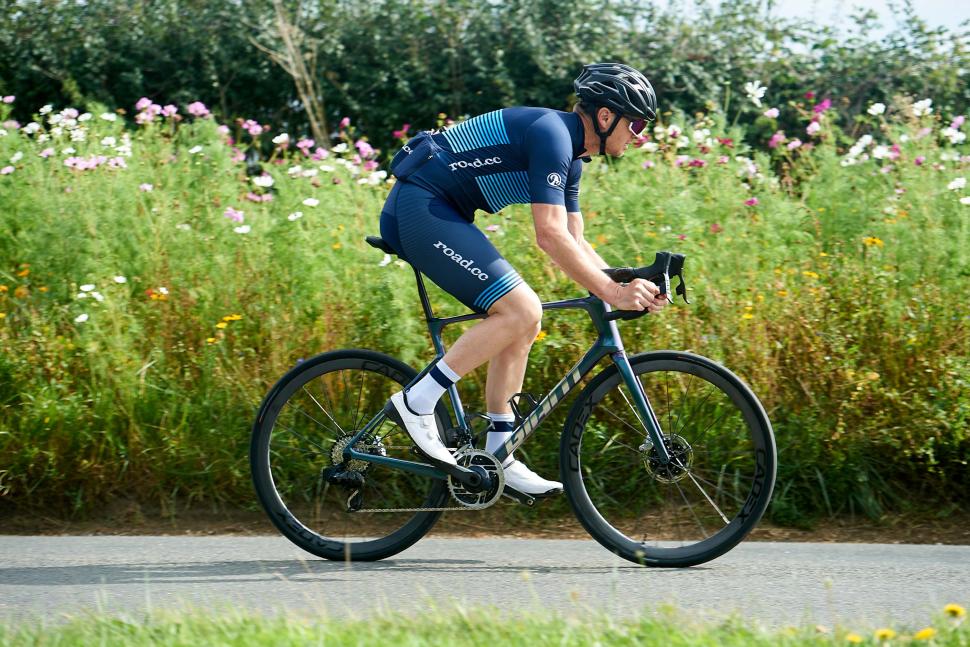

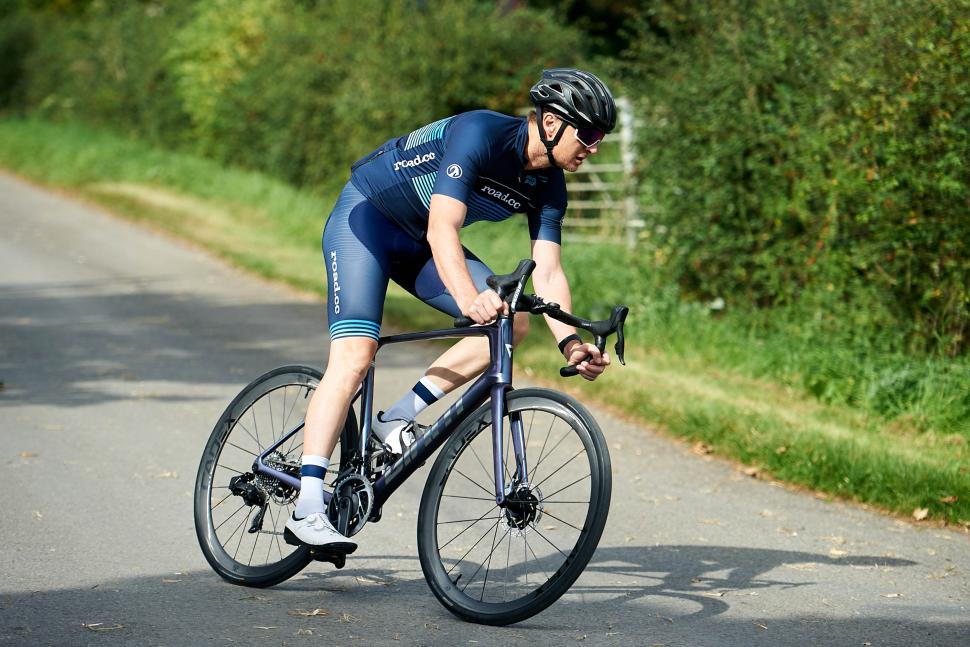
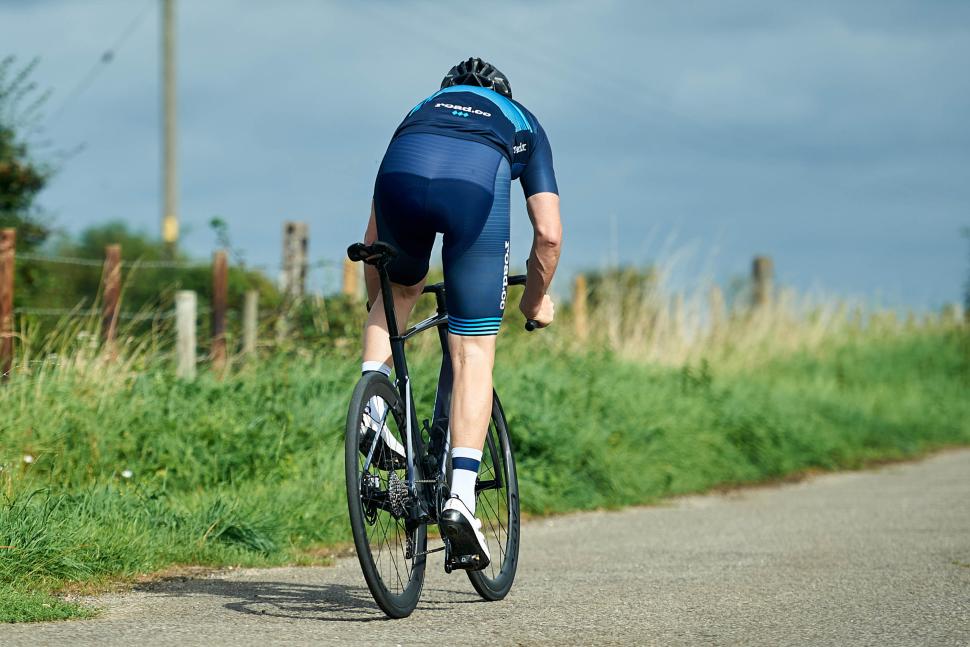


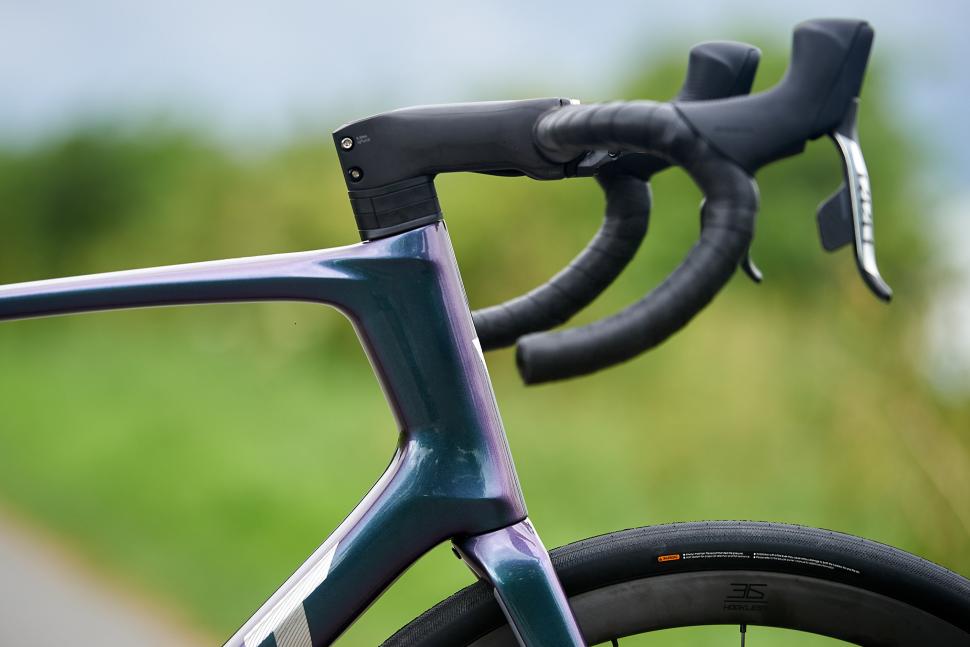
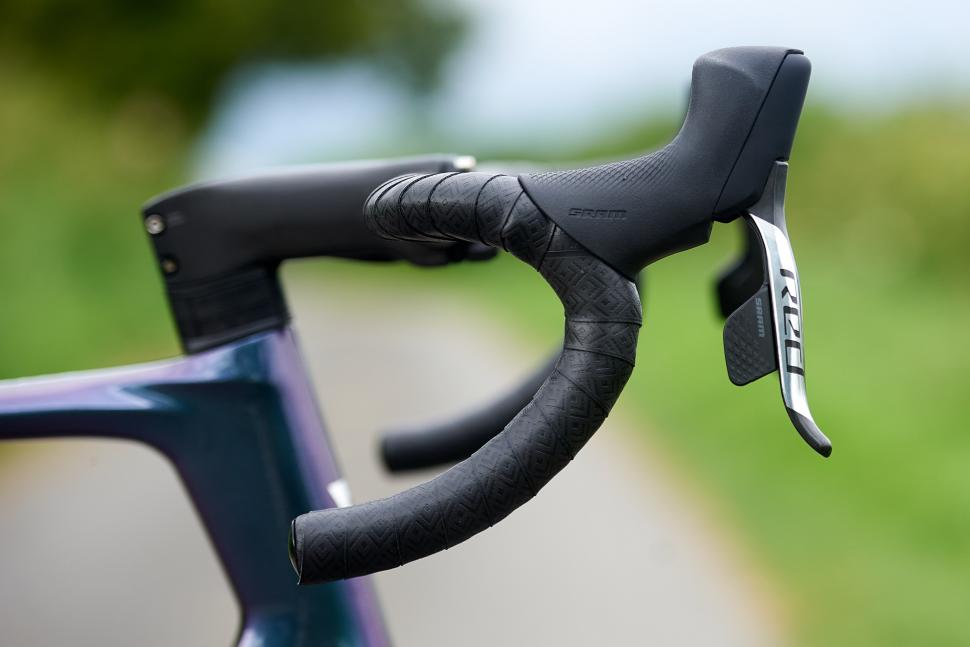
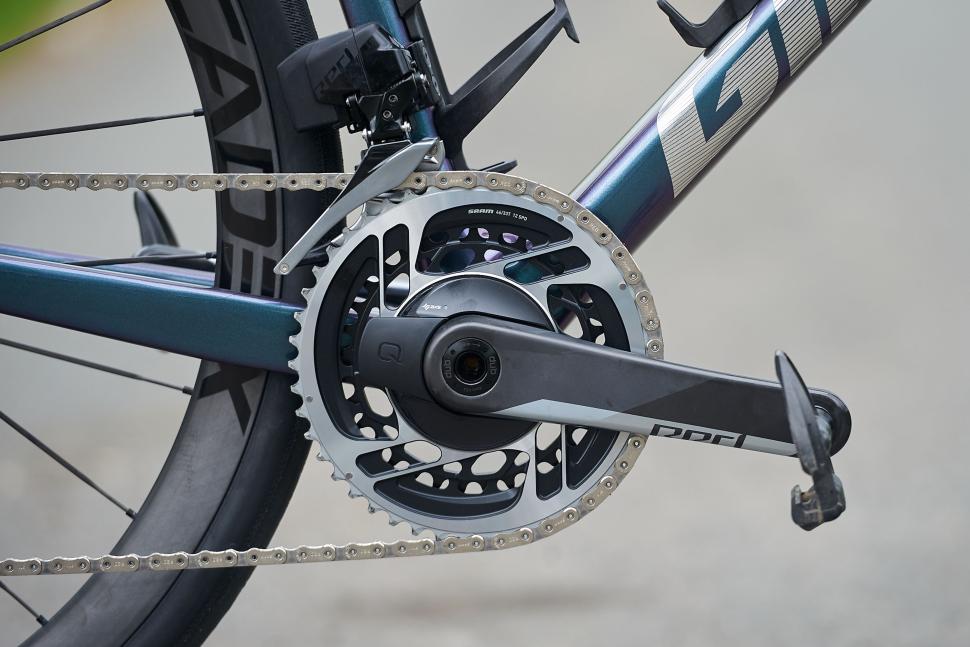








Add new comment
19 comments
I love the Defy having owned a couple along with a Revolt which shared the front triangle geo. I'm in two minds about the lower stack. Yes you did feel more upright than other bikes in the class but Giant always shipped them with 30-40mm of spacers and a riser stem, so it was easy enough to tune a fit to accommodate your level of flexibility. I'm guessing that will be less easy with the integrated routing and lower starting point. Perhaps I'm biased because I found the old geo to be perfect.
Other than that the bike remains a great choice. All the frames have mudguard mounts in more or less traditional places and they even sell a seat collar clamp to enable you to run a rack if you wish. The base model comes with Tiagra and just needs a better wheelset to be perfect for most riders. Just wish they sold it as a frameset.
I find the current market baffling. On the one hand, the bikes are getting very expensive and yet, on the other hand, this seems to come with built in difficulties in getting the position right. For me, there is a load of old malarky about how xx bike is 10% more this, 15% less that, and yet the riding position has to be right up there with the top factors on having a great bike that makes one want to get out and ride.
Nowadays, bikes come with integrated front ends, so simple adjustments that I made on my 'nice' bike such as shortening the stem by 10mm and then lowering it by 20mm, along with a simple bar swap from 420mm wide to 400, seem bloody impossible because the components are not readiy available and you will need to get an expert who is prepared to have a go at fitting it all, which will also come at a hefty price because of all the effort. Bonkers!
Completely agree! Every single bike I've owned from new I've tweaked either the stem angle, length, or spacer stack on. Same goes for bars once I became proficient at wrapping bar tape. Bike fitters must hate this trend.
I think these models have two purposes, to make the ones they intend to sell seem a reasonable price in comparison and secondly to extract the most from the more money than sense crowd.
The number of competitive cyclists who could justify or afford the spend (of their own money) must be vanishingly small, especially when you consider they'd then be thinking of upgrading the wheels or adding further wheel sets, and there simply isn't a realistic justification for general club cycling - but that's where they will appear.
There may be several more "purposes" about.
One might be the pleasing of cycling website reviewer-frockers who will have "warm feelings" toward the manufacturer consequent from being allowed to fondle & coo over a particularly alluring bit of bike porn. (On the other hand, they do mention the far less expensive but just as functional models, with a bit of a smirk & a nod).
Another purpose might be to provide The Mark and similar with an opportunity to sneer at those agape and aghast at the jacking up of bicycle prices to giddy heights via a movement of such bicycles into the category: expensive gewgaws for dafties with excessive feelings of low self-worth needing lookatme emblems with which to signal a denial of their condition ... and the excessive dosh to attempt such transparent-to-others self-delusion.
In short - marketing glamour spells intended to hide the mundane, very ordinary or even degraded one crouching behind their glittering purchase.
Them capitalists have, these days, all sorts of queer techniques for flogging their stuff for as much as they can get from those daft enough to give it. They even have forum useful idiots who will climb, braying support, on to their bandwagons at no cost to the crafty capitalist!
After all, if the value of a thing is what someone is willing to pay for it rather than an old-fashioned worth based in its functional utility and cost to make ......... any price goes.
Oh brave new world, that has such gew-gaws in it.
********
Anyone else care to seek out and describe other such "purposes" that may be in play for such costly consumer needful things?
Not just the halo models that have gone up. The '19 base model was £1799 so it's gone up by about 27% in 5 years.
Just had a look and last year's model with the old geo and less integration is available for a few quid over £1500 which strikes me as a bargain for a Tiagra hydraulic bike. Just needs better wheels.
That would be an excellent buy, though I suspect not all sizes are available. I've seen it at £1,750 (RRP was previously £2,349), and the 2022 TCR at the same price. The current version is £2,299, with the same S-R2s and Gavia tyres.
I wonder how different (or better) the Defy feels compared to the alu-framed Contend.
Do fuck off you pompous delusional twat.
I wouldn't have even bothered to read this article, but I had to this time just so I could see what you were getting so het up about
We must wring what joy and amusement we can from these reviews, as the stuff about the various parts of them is not that relevant to the hoi-polloi cyclist needing to spend their shrinking wage on grub, heat or house rather than one-percenter man-toys for showing-orf to the other one-percenters.
These days, a fundamental question concerning all bikes may be: is it good for deliverooing or otherwise cycling to exhaustion for £0.97 an hour in some crap job; or to get to the crap job, cars being now an impossible dream and the buses all gone? Sadly, the Giant in question fails utterly to meet this growing need of the wider cycling population.
Takes mudguards and you can fit a pannier rack so I'd say it's well equipped for a spot of 'Rooing.
Won't it all collapse under the weight of the rooded stuff and the impact of potholery needing to be ridden through? Also, you wouldn't dare stop or get orf to do a delivery, would you, as a spiv would be away with the pretty thing in a seond, cackling gleefully the while.
Also, think of the interest payments on the loan you'd have to take out to get it! I suppose you might be able to go a bit faster and so get more deliveries going ..... but its still only £0.97 an hour and a broken spoke will cost £163.91 + VAT to fix.
Perhaps The Mark knows where to get one with 3% off?
I do enjoy observing your wee antic. Like the antipodal of them laughing sailors in a cabinet, you are, that they used to have in amusement arcades. I'm sure I've got a few old pennies left somewhere ..... .
It's the equivalent of the Type R version of the Honda Civic, a halo bike. Actually it's more like the silly S-Line Audis which are all style and no extra go.
oh ,too much
5 - 4 - 3 - 2 - 1...
No, a snip at 1 - 1 - 4 - 9 - 9...
I was counting down to the first post under here along the lines of "something something - madness - something - not needed - nobody needs it - something something - the world has gone mad"
NIce bike though.